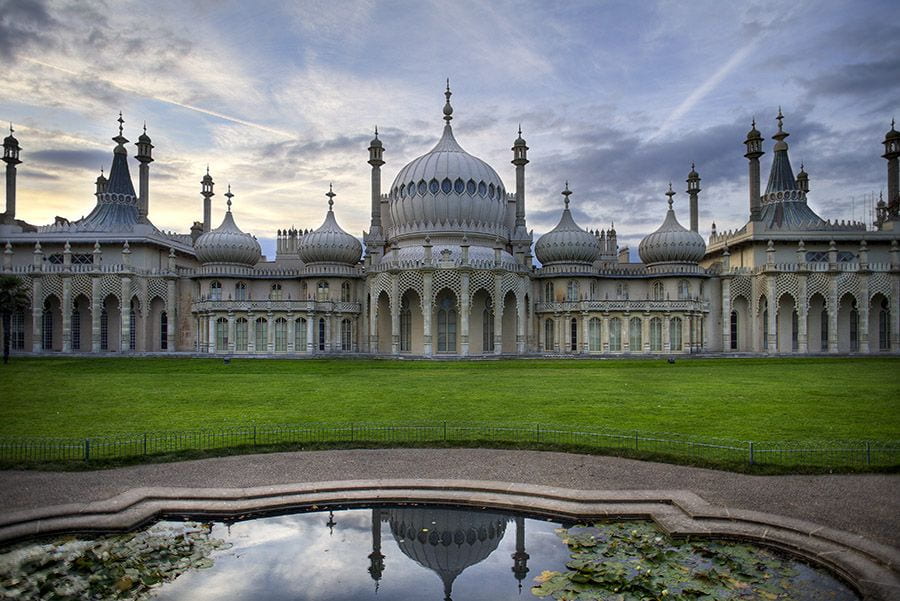For this week’s journal, I chose one of the buildings that stuck out to me the most from last Wednesdays lecture: John Nash’s Royal Pavilion in Brighton, England. The lecture was very interesting and contained many spectacular Renaissance Revival buildings and grandiose homes, but Nash’s architecture stood out. We had also looked at Nash’s Chester Terrace and Cumberland Terrace, both of which had that Classical Greek and Roman/Renaissance feel to it, but The Royal Pavilion truly stood out. Unlike the other two, this building had an entirely different theme to it. The exterior of the structure had a heavy Middle Eastern and Indian influence. The elaborate structure featured porticos, rotundas, colonnades, and minarets all following the Info-Islamic style. Although the building seems incredibly different from others built at the same time, and even by the same architect, it’s actual structure is actually quite similar. The actual layout and construction of the building would be the same as just about any other. This brought a sense of familiarity to the building. British society and the nobility who could afford to reside in such buildings had a very routine way of going about their daily lives and how they used their homes. Although the lavish, exotic exterior, and colorful, tropical interior were designed to be unique from the basic neoclassical style, the building was still able to function exactly the same as any other. This is called morphology. Morphology took influence from other countries and basically superimposed them onto existing layouts and structures, creating a very decorative aesthetic. I also chose this building because it tied into what we were speaking about in Recitation. In class we spoke about exhibitions and museums like the Crystal Palace and The South Kensington Museum. Both featured a lot of artworks inspired by or taken from the Middle East, and Asia, including India. Clearly, Western Europeans had a fascination with these styles that the views as “exotic,” and “oriental.” Just as the curated their exhibits and museums, they designed some of their architecture by both appreciating and appropriating other cultures.
